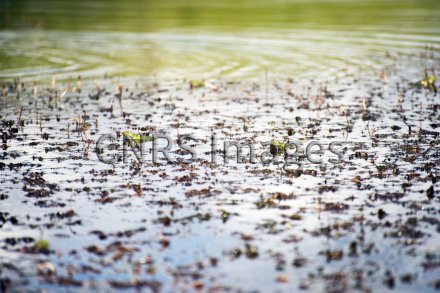Production year
2014

© Cyril FRESILLON/IRSTEA/CNRS Images
20140001_1563
Batraciens dans la zone tampon humide artificielle de Rampillon (1,5 ha environ), en Seine-et-Marne. Les champs alentours sont drainés pour évacuer les eaux de pluie excédentaires. La zone tampon humide est un dispositif naturel permettant d'intercepter les flux de pesticides et de les épurer grâce à l'activité microbienne du milieu. La fixation des pesticides se fait sur les végétaux, ils sont ensuite dégradés par la lumière ou l'activité microbienne du milieu.
The use of media visible on the CNRS Images Platform can be granted on request. Any reproduction or representation is forbidden without prior authorization from CNRS Images (except for resources under Creative Commons license).
No modification of an image may be made without the prior consent of CNRS Images.
No use of an image for advertising purposes or distribution to a third party may be made without the prior agreement of CNRS Images.
For more information, please consult our general conditions
2014
Our work is guided by the way scientists question the world around them and we translate their research into images to help people to understand the world better and to awaken their curiosity and wonderment.